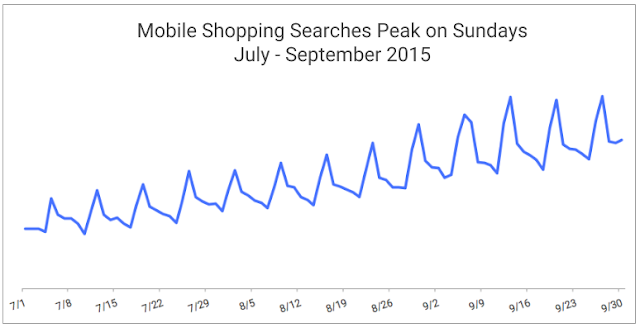People turn to multiple devices throughout the day to shop, communicate and stay entertained. From a laptop at work to a tablet in the living room, we move sequentially and seamlessly between many device types to get stuff done. In fact, nearly 40% of online shoppers start their research on a smartphone and make their final purchase on a computer or tablet.1 That’s why for several years, we've invested in cross-device conversions across Search, Display and Shopping. Advertisers around the world are now capturing the full value of their AdWords campaigns by using cross-device insights to measure up to 16% more conversions.
Starting today, cross-device conversions will begin rolling out at the keyword-level and can be included in the main Conversions column that already includes website sales, phone calls and app downloads. By showing all conversions in one place, advertisers can get deeper insight into all the ways customers are engaging with their businesses. It’s also easier than ever to take action on these insights: with all of your conversions in the same column, you can quickly enable automated bidding to optimize for the conversions that matter.
To activate cross-device conversions in automated bidding, complete two easy steps in your AdWords account under Tools>Conversions:
Posted by Wilfred Yeung, Senior Product Manager, AdWords Bidding
1 The Role of Mobile Search on Store Purchases, Google/Ipsos Media CT, August 2015. Purchases were made within the past 3 months.
Starting today, cross-device conversions will begin rolling out at the keyword-level and can be included in the main Conversions column that already includes website sales, phone calls and app downloads. By showing all conversions in one place, advertisers can get deeper insight into all the ways customers are engaging with their businesses. It’s also easier than ever to take action on these insights: with all of your conversions in the same column, you can quickly enable automated bidding to optimize for the conversions that matter.
To activate cross-device conversions in automated bidding, complete two easy steps in your AdWords account under Tools>Conversions:
- Under Settings, make sure the Conversion bid metric is set to “Conversions” instead of “Converted clicks.” As a reminder, cross-device conversions and other controls are not offered for “Converted clicks”.
- Click “Include advanced conversions” and check the box to include cross-device and other advanced conversions in your “Conversions” reporting column and automated bidding.
Posted by Wilfred Yeung, Senior Product Manager, AdWords Bidding
1 The Role of Mobile Search on Store Purchases, Google/Ipsos Media CT, August 2015. Purchases were made within the past 3 months.
















